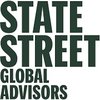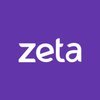Filter interviews by
State Street Global Advisors Interview Questions, Process, and Tips
State Street Global Advisors Interview Experiences
6 interviews found
I applied via Naukri.com and was interviewed in Aug 2021. There was 1 interview round.
Interview Questionnaire
4 Questions
- Q1. Difference between Futures and Forwards
- Ans.
Futures and forwards are both types of derivative contracts, but they differ in terms of their standardization, trading platform, and settlement.
Futures contracts are standardized and traded on exchanges, while forwards are customized and traded over-the-counter.
Futures contracts have daily settlement and are marked-to-market, while forwards settle at the end of the contract period.
Futures contracts have lower counterp...
- Q2. Difference between GAAP and IFRS
- Ans.
GAAP and IFRS are two different accounting standards used globally.
GAAP is used primarily in the United States, while IFRS is used in most other countries.
GAAP is rules-based, while IFRS is principles-based.
IFRS allows for more judgment and interpretation in financial reporting.
IFRS requires more extensive disclosures in financial statements.
IFRS is considered more flexible and adaptable to changing business environmen...
- Q3. What are Bonds
- Ans.
Bonds are debt securities issued by companies or governments to raise capital.
Bonds are essentially loans that investors make to the issuer
They have a fixed interest rate and a maturity date
The issuer pays interest to the bondholder until the bond matures
At maturity, the issuer repays the principal amount to the bondholder
Bonds are generally considered less risky than stocks
Examples of bonds include government bonds, c
- Q4. What are Derivatives
- Ans.
Derivatives are financial instruments whose value is derived from an underlying asset or benchmark.
Derivatives are contracts between two parties that specify the conditions for buying or selling an asset at a future date and price.
They are used for hedging, speculation, and arbitrage in financial markets.
Examples of derivatives include futures contracts, options, swaps, and forward contracts.
Interview Preparation Tips
Associate L2 Interview Questions asked at other Companies

(1 Question)
- Q1. General questions about your visa, expected salary and your resume.
(1 Question)
- Q1. How do you handle stressful situation?
Officer Interview Questions asked at other Companies
I applied via Referral and was interviewed before Feb 2023. There was 1 interview round.
(1 Question)
- Q1. What is Asset Allocation
- Ans.
Asset allocation is the strategy of dividing investments among different asset classes to achieve a balance of risk and return.
Asset allocation involves spreading investments across different asset classes such as stocks, bonds, and cash equivalents.
The goal of asset allocation is to create a diversified portfolio that can help manage risk and maximize returns.
Investors may adjust their asset allocation based on their ...
Emerging Leader Interview Questions asked at other Companies
I applied via Recruitment Consulltant and was interviewed before Mar 2022. There were 2 interview rounds.

(2 Questions)
- Q1. What are Types of Swaps and Different swap Products.
- Ans.
Swaps are financial contracts between two parties to exchange cash flows. Types include interest rate, currency, commodity, and equity swaps.
Interest rate swaps involve exchanging fixed and floating interest rate payments.
Currency swaps involve exchanging principal and interest payments in different currencies.
Commodity swaps involve exchanging cash flows based on the price of a commodity.
Equity swaps involve exchangin...
- Q2. Pass Accrual Expense Entry and Accrual Income
Interview Preparation Tips
- Finance
And also prepare Trade life cycle and Trade Reconciliation as well.
Associate Analyst 2 Interview Questions asked at other Companies
State Street Global Advisors interview questions for popular designations
I applied via Recruitment Consulltant and was interviewed before Oct 2021. There were 4 interview rounds.

(2 Questions)
- Q1. About capital markets basics and previous company project details related questions
- Q2. Fixed income, equity, corporate actions, derivatives
(3 Questions)
- Q1. About previous company project related details
- Q2. What is the reason for change
- Q3. Derivatives difference between future and options
- Ans.
Futures and options are both derivatives, but futures obligate the buyer to purchase or sell an asset, while options give the buyer the right to buy or sell.
Futures are contracts that obligate the buyer to purchase or sell an asset at a specific price and date in the future.
Options give the buyer the right, but not the obligation, to buy or sell an asset at a specific price and date in the future.
Futures are standardiz...
Group discussion is about women empowerment pros and cons
Interview Preparation Tips
- Fixed Income
- Derivatives
- Equity
- Corporate Actions
Business Analyst Interview Questions asked at other Companies
Interview Questionnaire
1 Question
- Q1. IAM (Identity Access Management)
Interview Preparation Tips
Associate L2 Interview Questions asked at other Companies
Top trending discussions






Interview questions from similar companies

I appeared for an interview before Jun 2016.
Interview Preparation Tips
Experience: McKinsey looks for a spike in your resume, people who have commendable achievements is their field of choice, academics, extra curriculars or sports. So be sure to make your resume accordingly. McKinsey adds a lot of weight-age to formal awards, scholarships, achievements (like inter-IIT) etc. But if you don?t have them (like me) you just have to make extra effort to show that you have equivalent achievements.
Round: Technical + HR Interview
Experience: First I was asked about myself and mostly my connection to dance and the dance club. (Some interviewers do this to make you comfortable at the same time analyzing your personality). In the first interview I was given an estimation case about the dish TV industry. Here the interviewer was mostly interested in my approach to solving the problem and if applicable my numerical skills. The second interview was a pure business case about the printing business. Here my creativity and business sense (read common sense as applicable to a business situation) was put to test.
Tips: Take on every interview as if that job doesn?t mean anything to you.

I applied via Walk-in
Interview Preparation Tips
Experience: Here we had to look at alternatives, such as cost of wearing glasses all your life, and the amount you would be spending, and discounting the amount you spend each year. I mentioned the cost of glasses, doctor visits, contacts, also laser surgery etc, to finally compute the price.
The second case which I got in the 3rd round, was also about a medical company which was facing a problem of falling profits. Here there were several problems, low productivity, and falling sales as well. Here the sales force was required to convince the doctors about its products, as they would then prescribe the medicines. Important thing here was whether they were targeting the right doctors who had a lot of patients, whether doctors were already loyal to some other company etc.
Tips: Practising a lot of cases not only with others, but also going through solutions on your own helps a lot. It is important to keep analyzing your mistakes rather than doing a lot of cases. HR answers are probably even more important than the case themselves, so it is important to prepare them well in advance.
Skills: Case Solving Ability, Case Analysis
College Name: IIM Lucknow

I applied via Walk-in
Interview Questionnaire
2 Questions
- Q1. Heathrow airport wishes to add a 5th terminal to its existing 4 terminals. Should it go ahead?
- Ans.
Yes, Heathrow airport should go ahead with adding a 5th terminal.
Heathrow is one of the busiest airports in the world and needs to expand to accommodate increasing demand.
A 5th terminal would provide more capacity for airlines and passengers, reducing congestion and improving the overall experience.
The construction of the terminal would also create jobs and boost the local economy.
However, careful planning and consider...
- Q2. Not a formal case, but broad industry level strategic discussions about IT & IT Products and Innovation
Interview Preparation Tips
Experience: I started off saying that the problem statement looks like it’s a Go/NoGo decision we have to help make, so first we should establish the exact objective against which we would measure our decision. Once the objective is clear, we would need to establish our current performance against the objective, what is the target level we wish to achieve on that particular objective and then evaluate if the new terminal would help us achieve that or not. But before that I would like to clarify about exactly what is meant by a terminal here.
JC: Heathrow is one of the busiest airports and already has 4 different passenger terminals, now they want to add a 5th. A terminal provides the usual services like Bays for Boarding & disembarking, Check-In, Security, Lounges & shopping areas etc.
Me: Great, do we also have to look at the financial and operational viability of the terminal or that is not a concern.
JC: for the purpose of discussion let’s ignore that, those would not be the constraints.
Me: Ok, so maybe we should the start looking at what the administrations core objective is for the new terminal. Why does it want to come up with a 5th terminal?
JC: Why don’t you tell me what those objectives could be?
Me: Well there could be many (started jotting down options in parallel as I spoke): 1) increase the #Passengers served per year, 2) Reduce Flight Congestion if any, 3) Reduce the Time spent by flights on the airport, 4) Increase the airports revenue sources. Am I missing any other?
JC: No I think you have mentioned the major ones, let’s briefly talk about each of these. What do you mean by the revenue sources?
Me: Then we had a brief discussion about revenues from shopping areas etc. Then we came to Flight congestion – primary metric there was time spent in air waiting for permission to land etc. Then we came to #Passengers served per year which is more of a demand metric and effectively dependent on the number of flights we can serve per day. We also discussed Time spent by flights on the airport and split that into further two types – flight landing and takeoff time and turnaround at the gates. At the end of this brief digression it emerged that if Time spent by Flights on airport can go down, #Flights can go up and so can #passengers, at the same time congestion can go down as well. Me: (summarizing) So is it fair to say that the objective of building the 5thterminal is to achieve a higher capacity at the airport and our problem definition is to evaluate that claim?
JC: Yes, if you wish to frame it so - effectively our problem definition is if the 5th terminal adds to the capacity of the System? Me: Good just give me a minute to put my thoughts in place as to how we can go about evaluating this?
JC: Sure..
Me: Ok as I mentioned, what we need to decide what is the exact metric used for measuring Capacity? Then what is the current value of airport for that metric? Then what impact would the new terminal on the level of the metric? That should lead us to an answer.
JC: Ok, so what do you want to know
Me: How do airports measure their capacity?
JC: Two commonly used metrics are ATM – Air Traffic Movements, and MPPA – Million Passengers Per Annum. For our discussion lets focus on ATM.
Me: So just to clarify ATM refers to a single air traffic movement, therefore the turnaround of one flight i.e. landing and take off would count as one or two ATMs?
JC: Two Me: Ok, so do we know what is the current ATM?
JC: How would you find that out?
Me: well the annual ATM would be average Flights per day * 365 * 2 JC: Right lets keep the analysis to per day Me: Ok so what’s the current #daily flights?
JC: Am not sure why that is relevant here for answering our question but lets say 100.
Me: No, this would help us by how much will the Terminal increase the capacity. Ok so how many Bays would there be in the new terminal?
JC: 50
Me: And do we know on average one flight spends how much time at a Bay?
JC: 60 minutes
Me: Is that number in line with international standards or is there scope to impact that by way of terminal design or operations?
JC: No that’s about the best you can get ☺
Me: Fair is the distribution of traffic the same through out the day, or in other words is the demand pattern similar through out the day or is it varying with time? JC: Let’s assume that a bay is utilized effectively only for 12 hours in a day. Me: Ok so that means a given bay has the capacity of 2 ATMs per hour or 50 bays together would add 50 * 2 *12 or 1200 ATMs
JC: So should we add Terminal 5?
Me: Well yes from our analysis so far it does appear that adding the 5 Terminal could add upto 1200 ATMs per day and therefore one should go ahead.
JC: But what was our problem definition?
Me: (a little flustered) will the new terminal add to the capacity of the airport?
JC: yes of the entire system. So will it?
Me: (suddenly a light bulb strikes ☺, smiling) Ok I possibly get the drift of what you are trying to hint at, while the terminal has the potential to add so many ATMs, it is not necessary that the capacity of the entire system will be incremented by that number.
JC: Correct, and why that may be so? Me: Because the bottleneck in the system may be some where else.
JC: Right and so what defined a bottleneck Me: In any system the resource which has the lowest capacity and for which the implied demand is higher than its capacity constitutes a bottleneck, and also limits the throughput of the entire system.
JC: So what else could be a bottleneck in the system? Me: Runway JC: Ok and how can we find that out?
Me: We need to evaluate the utilization of the runway. How long does it typically take for a successive takeoff or landing on a given runway?
JC: How can we find that out?
Me: A mathematical way to do that would be to find the typical distance an aircraft travels while landing/takeoff and at what speed to find the time for which it uses the runway, another could be that there would be some minimum time set by the ATC/guidelines as the minimum inter flight time that would limit the number of planes that can use a runway.
JC: Right, let’s leave the mathematical way, what do you think the other number is?
Me: I don’t know for sure, but from my observation the time in India is something like 5-6 minutes between flight landings/takeoffs
JC: Ok those might be t he numbers in India, but Heathrow is a very busy airport and there the minimum time is 90 seconds.
Me: (quickly doing the numbers) 90 seconds implies 1 ATM every 1.5 minutes or a max of 40 ATMs per hour or a max of 40*24 = 960 ATMs per day per runway.
JC: Correct, so assuming there are 2 runways already what would now be the impact of adding the terminal 5 on the capacity of the system?
Me: Let’s assume that the current capacity of the terminals is X, then the current capacity of the system is min(960*2, X), and after the new terminal comes online the capacity of the system would become min(960*2, X + 1200). (I actually clearly wrote down the mathematical form) So depending on the value of X we will know how much the capacity of the system can improve by, and our decision should be driven by if that new number is enough to achieve our goal or not? For any positive value of X > 720 it seems we will only be able to go up to a max 1920 ATMs per day, without adding a new runway or decreasing inter ATM time for runway usage.
JC: Good I think we are done with the case. Do you have any quick questions for me?
Me: Sure why don’t you tell me a bit about the nature of work you have been doing and the kind of work BTO London does?
Tips: Listen carefully, especially the case question/problem framing Maintain a pleasant disposition, Do Smile Be ready to admit your mistakes and over sights Speak slowly (Especially when dealing with international interviewers) Write down stuff in your pad - write legibly Steps should be Think, Write, Read out & Discuss. Do revise the core concepts – just helps you with the right terminology in he interviews. On the interview day take each interview on by one – Never think about any that you have already given, and nor about any to come.
Round: Case Study Interview
Experience: NFK: McKinsey has done some work in innovation in the BPO and outsourced project management space..
NFK: right.. they are operational excellence frameworks we have come up with to assess the best practices in the BPO and outsourced application domains.. so the question is if you were to develop a similar framework for excellence in the product development or product development outsourcing space what metrics do you think can be used to measure those?
NFK: Ok..
Tips: If possible do read a bit about the interviewer’s background. You wouldn’t get to know your exact interviewers till shortly before the interview so you obviously can’t read about all, but try to read up about the senior people as well as people who will be from similar backgrounds as yourself. Excellent way to do that is to get on to company sites and browse for interview panelists profiles. In the case of McKinsey, try to get to McKinsey Quarterly, and then search for the interviewer and articles written by the person Be prepared to get the broad discussion cases even in the first round. Have a perspective on the industry of your choice and or background – again a good way to do that is to browse articles and industry reports. If you are able to go through even one consulting firms site reasonably you should be in good shape. Try to change the plane of your answers depending on the interviewers interests – when to give thr 50,000 Ft view and when to give the 100 ft view. In hind sight I think the corporate strategy course had a lot of articles about outsourcing and different models of comp advantage for multinational organizations and how to leverage offices in different geographies. Though I myself didn’t recall much of that article but then it just shows you never know which reading might come in handy where ☺Have questions that you want to ask ready
Skills: Case Solving Ability, Case Analysis
College Name: Indian School Of Business (ISB)

I applied via Walk-in
Interview Questionnaire
1 Question
- Q1. Why is a new terminal at an airport required?
- Ans.
A new terminal at an airport is required to accommodate increasing passenger traffic and improve overall airport experience.
Current terminal may be overcrowded and unable to handle the volume of passengers
New terminal can provide additional gates, lounges, and amenities for passengers
Improved airport experience can attract more airlines and increase revenue
New terminal can also incorporate modern technology and sustain...
Interview Preparation Tips
Experience: LHR airport is building Terminal 5. Why? Identified the purpose of terminals, and its physical layout. Defined capacity as throughput of baggage (big mistake: capacity here was supposed to be that of airport with runways being the bottleneck!!). Compared capacity of T-5 with that of other terminals. Basically, T-5 is being built to accommodate the A380. I knew this from my GK but didn’t exactly shine through in the interview.
Identified it as an operations issue. After that everything went downhill. About halfway through the interview, I realized that I was dinged anyhow (I’d have rejected me had I been the interviewer), so there was less pressure and I had a relaxed time with the case after that.
Tips: Don’t neglect operations based cases. These were the least favorite ones of mine during prep. Even if interviewer is hostile, keep a cool head and think logically, don’t let the pressure get to you
Skills: Case Solving Ability, Case Analysis
College Name: Indian School Of Business (ISB)
State Street Global Advisors Interview FAQs
Tell us how to improve this page.
State Street Global Advisors Interviews By Designations
- State Street Global Advisors Associate L2 Interview Questions
- State Street Global Advisors Associate Analyst 2 Interview Questions
- State Street Global Advisors Emerging Leader Interview Questions
- State Street Global Advisors Business Analyst Interview Questions
- State Street Global Advisors Officer Interview Questions
Interview Questions for Popular Designations
State Street Global Advisors Interview Process
based on 5 interviews
Interview experience
Interview Questions from Similar Companies
State Street Global Advisors Reviews and Ratings
based on 199 reviews
Rating in categories
|
Senior Associate
297
salaries
| ₹4 L/yr - ₹13.9 L/yr |
|
Associate2
165
salaries
| ₹2 L/yr - ₹7 L/yr |
|
Emerging Leader
141
salaries
| ₹5 L/yr - ₹13.2 L/yr |
|
Assistant Manager
134
salaries
| ₹9 L/yr - ₹27 L/yr |
|
Team Lead
122
salaries
| ₹6 L/yr - ₹20 L/yr |

Sterling & Wilson

AXA Business Services

Chegg

CMA CGM
- Home >
- Interviews >
- State Street Global Advisors Interview Questions











